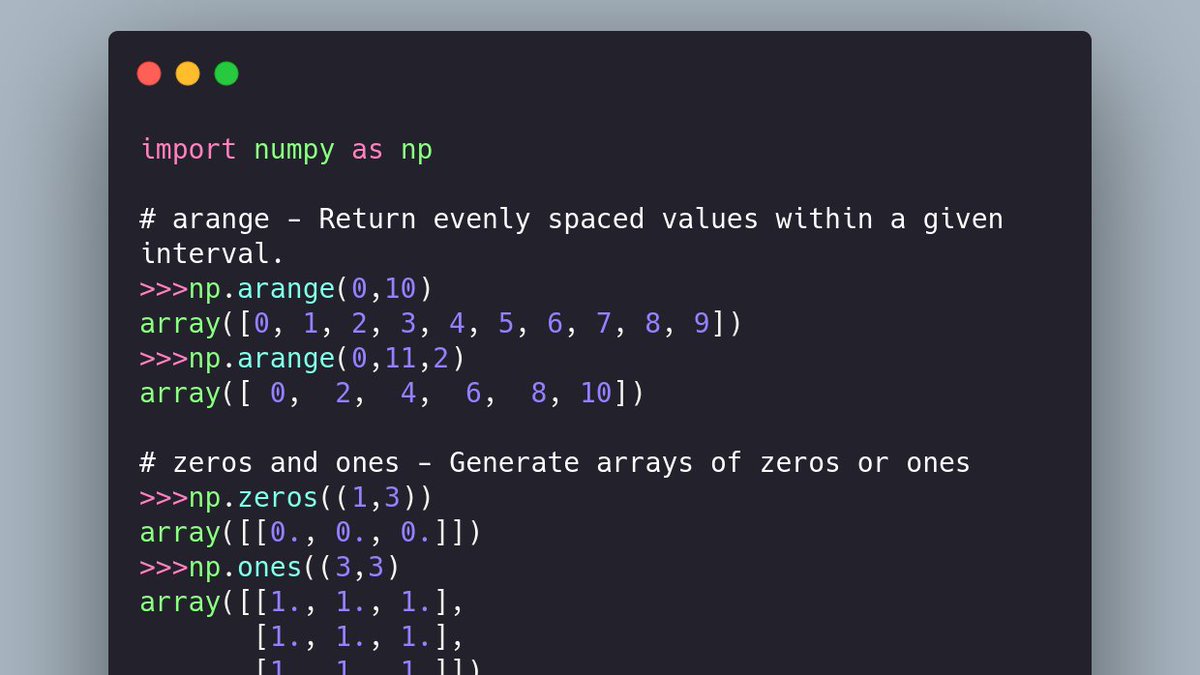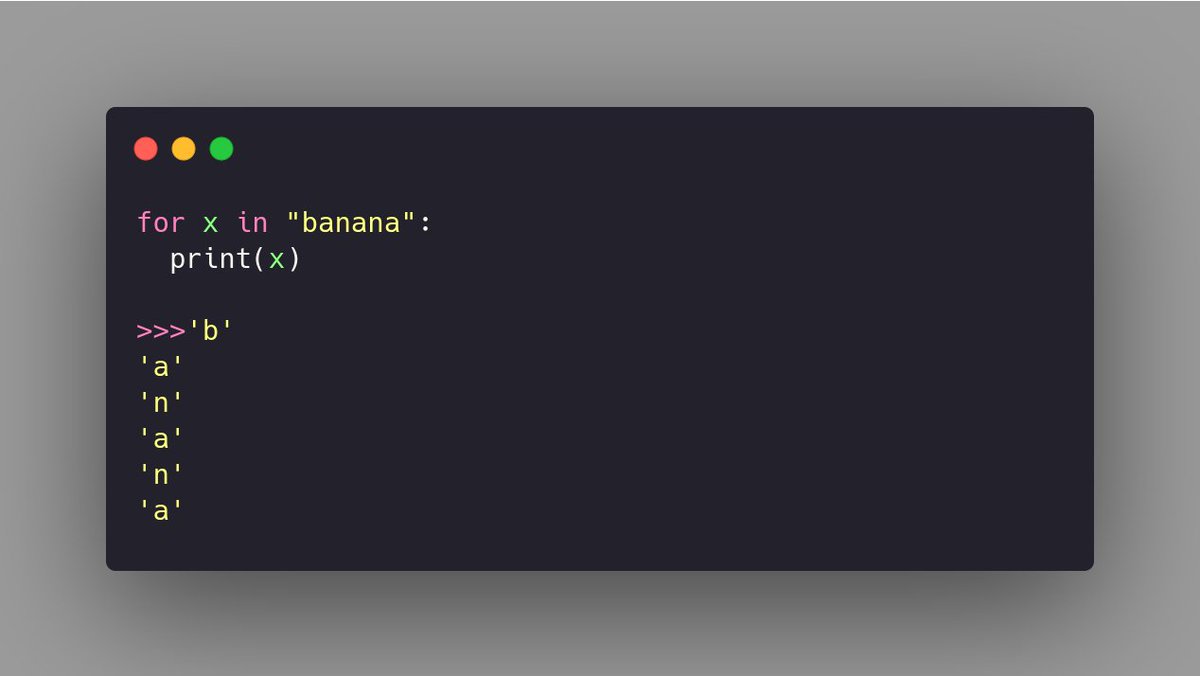
Want to learn Data Science but confused about where to start and what to follow?
Here are the ultimate 12 months Learning path to becoming a Data Scientist 👨🎓
Note: I'm personally following this roadmap
🧵👇
#DataScience #MachineLearning #100DaysOfCode #66DaysOfCode #Python
Here are the ultimate 12 months Learning path to becoming a Data Scientist 👨🎓
Note: I'm personally following this roadmap
🧵👇
#DataScience #MachineLearning #100DaysOfCode #66DaysOfCode #Python
Since we're currently in July, so start from this month.
Understanding Data Science and getting started with Python
- what is data science?
- what does a data scientist do?
- find out various resources
- Set up the system
- Learn Python basics
- Introduction to Pandas & Numpy
Understanding Data Science and getting started with Python
- what is data science?
- what does a data scientist do?
- find out various resources
- Set up the system
- Learn Python basics
- Introduction to Pandas & Numpy
August -
Mathematics, Statistics & SQL
- Linear Algebra
- Introduction to Probability
- Statistics - inferential & descriptive
- Exploratory Data Analysis
- SQL for Data science
- Projects on EDA and SQL
Start engaging in the Data Science & Machine Learning community
Mathematics, Statistics & SQL
- Linear Algebra
- Introduction to Probability
- Statistics - inferential & descriptive
- Exploratory Data Analysis
- SQL for Data science
- Projects on EDA and SQL
Start engaging in the Data Science & Machine Learning community
September -
Basic Machine Learning Algorithms
- Understand Machine Learning Pipeline
- Linear Regression
- Logistic Regression
- Regression Project
- Decision Tree
- Naive Bayes
- Support Vector Machines
- Feature Engineering
- Classification Project
Work on @github Profile
Basic Machine Learning Algorithms
- Understand Machine Learning Pipeline
- Linear Regression
- Logistic Regression
- Regression Project
- Decision Tree
- Naive Bayes
- Support Vector Machines
- Feature Engineering
- Classification Project
Work on @github Profile
October -
Learn about Ensemble Models and Techniques
- Unsupervised Learning
- Unsupervised Projects
- Understand Ensemble Learning
- Random Forest
- Boosting Algorithms
- Advanced Ensemble Learning
Start Participating in competitions @kaggle
Learn about Ensemble Models and Techniques
- Unsupervised Learning
- Unsupervised Projects
- Understand Ensemble Learning
- Random Forest
- Boosting Algorithms
- Advanced Ensemble Learning
Start Participating in competitions @kaggle
November -
Learn about Validation, Hyperparameter tuning & Time Series
- Validation Strategies
- Hyperparameter tuning
- Time Series
- Time Series Project
Build Resume and apply for Internships
Learn about Validation, Hyperparameter tuning & Time Series
- Validation Strategies
- Hyperparameter tuning
- Time Series
- Time Series Project
Build Resume and apply for Internships
December -
Getting started with Neural Networks & Deep Learning
- Setup the system for Deep Learning or learn using @GoogleColab
- Introduction to Deep Learning (ANN)
- Introduction to Keras
Start writing Articles
Getting started with Neural Networks & Deep Learning
- Setup the system for Deep Learning or learn using @GoogleColab
- Introduction to Deep Learning (ANN)
- Introduction to Keras
Start writing Articles
January 2022 -
Convolutional Neural Network
- Understand CNN
- Image classification using Keras
- Transfer Learning in Computer Vision
Explore @TensorFlow / @PyTorch
Convolutional Neural Network
- Understand CNN
- Image classification using Keras
- Transfer Learning in Computer Vision
Explore @TensorFlow / @PyTorch
February -
Computer Vision Projects
- Project 1: Color Detection
- Project 2: Perform Face Detection on Family Photos.
- Project 3: Human Emotion and Gesture Recognition
Computer Vision Projects
- Project 1: Color Detection
- Project 2: Perform Face Detection on Family Photos.
- Project 3: Human Emotion and Gesture Recognition
March -
Natural Language Processing
- Understand RNN, LSTM, GRU
- Text Preprocessing & Cleaning
- Text Classification
Natural Language Processing
- Understand RNN, LSTM, GRU
- Text Preprocessing & Cleaning
- Text Classification
April -
Advanced Natural Language Processing
- Text Summarisation
- Word Embeddings
- Topic Modelling
- NLP Project
- Transfer Learning in NLP
Advanced Natural Language Processing
- Text Summarisation
- Word Embeddings
- Topic Modelling
- NLP Project
- Transfer Learning in NLP
May -
Explore ML Cloud Platforms
- Amazon Web Services @awscloud
- Google Cloud @googlecloud
- Azure @Azure
- IBM Cloud @IBMcloud
Explore ML Cloud Platforms
- Amazon Web Services @awscloud
- Google Cloud @googlecloud
- Azure @Azure
- IBM Cloud @IBMcloud
June -
Big Data Tools
- Tableau or PowerBI or QlikView
- Hadoop
- Spark
- Hive
Congratulations 🥳🎉
You are ready as a Data Scientist.
Big Data Tools
- Tableau or PowerBI or QlikView
- Hadoop
- Spark
- Hive
Congratulations 🥳🎉
You are ready as a Data Scientist.
That's it for the thread 👋
A retweet for the first one would really mean a lot 🙏
Follow @PiyalBanik for more threads on DataScience MachineLearning, Python
Feel free to DM.
A retweet for the first one would really mean a lot 🙏
Follow @PiyalBanik for more threads on DataScience MachineLearning, Python
Feel free to DM.
• • •
Missing some Tweet in this thread? You can try to
force a refresh









